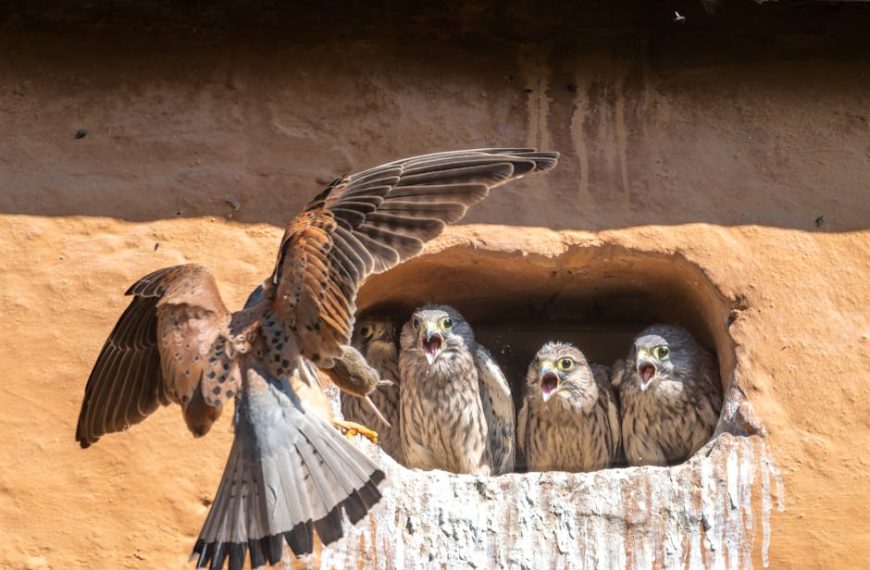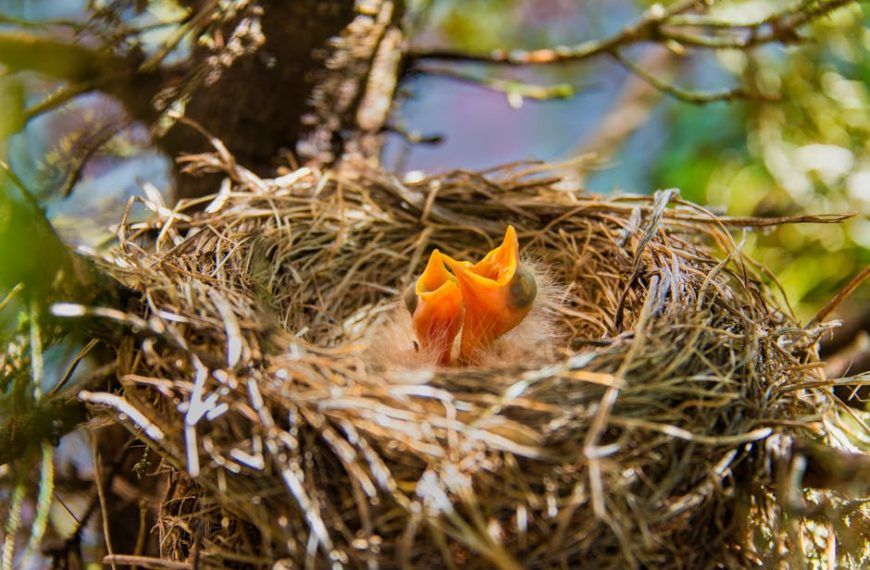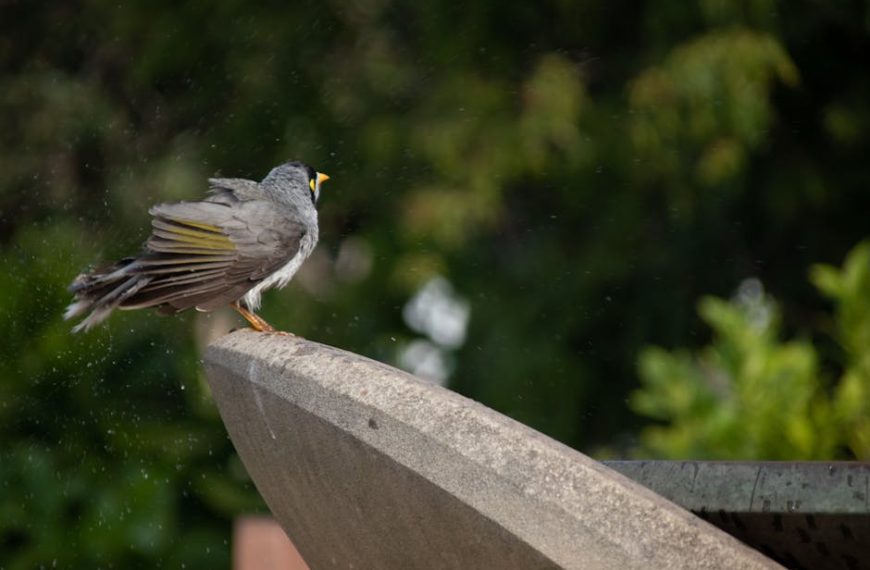When you stumble upon a bird’s nest with babies residing in your yard or surroundings, a myriad of emotions can flood in. While the sight can be fascinating and endearing, you might worry about their safety. The nest could be positioned in an unsafe location, or perhaps human activity poses a potential threat. This presents a dilemma: should you touch and relocate the bird’s nest or let nature take its course? This guide will walk you through a humane and legally compliant process of safely relocating a bird’s nest with babies if absolutely necessary, along with risks involved, legal considerations, necessary preparation, and post-relocation care practice.
Understanding the Risks in Relocating a Bird’s Nest
Relocating a bird’s nest, especially when it houses baby birds, is risky. The major concern rests on the fact that human interaction can cause immense distress to both parent birds and their babies. Disruption can instigate parents to abandon the nest, leaving the nestlings deserted – a situation that greatly slashes their chances of survival. Furthermore, a shift in location might be puzzing to the parent birds, which may find it challenging to locate the new nest, leading to unintentional abandonment.
↳ Pro Tips: Birds are very sensitive to touch. Extreme care is required while handling nests to avoid leaving an unfamiliar scent that might deter the parent birds. Keep an eye out for signs of distress in parents, such as incessantly circling the area, loud screeching, and aggressive behavior. Nestlings in distress may exhibit signs of restlessness, crowding at one side of the nest for warmth, or ceaseless chirping.
In relocation scenarios, certain bird species pose unique challenges. For instance, hummingbirds and robins build exceptionally tiny and fragile nests, which are easily destroyed when disturbed.
The Legalities of Nest Disturbance
In many places, including the United States, it’s illegal to disturb or remove a bird’s nest during the nesting season. This is due to the Migratory Bird Treaty Act, which provides federal protection to over a thousand species of birds. Disturbing these birds or their nests can result in hefty fines or even jail time.
↳ Best Practices: If relocation seems unavoidable, it’s crucial to consider the legal implications. Contact your local wildlife control agency for permission or necessary licenses before proceeding with nest disturbance. Familiarize yourself with the regulations in your region as they might vary from state to state.
Some of the US federally protected birds include the American Robin, Blue Jay, Canada Goose, and the Swift. When encountering a nest, identifying the bird species plays a significant role in deciding how you can or should proceed.
Preparation for Nest Relocation
Before handling nests, ascertain if initial intervention is truly warranted. Check for signs of nest abandonment like wavering parent visibility and audible hunger calls from the nestlings. Recognizing the nestling’s developmental stage also aids in making informed decisions.
↳ Checklist: Preparing a safe nest relocation kit is vital. Ensure you have protective gloves (to protect you from potential bird diseases and to prevent leaving your scent on the nest), clean containers (for transportation), and a substitute nest (if the original is damaged or destroyed).
↳ Pro Tips: Use a light touch when handling baby birds and their nest to minimize stress and harm. Remember, scared babies can jump from the nest, a risk to their well-being.
Steps for Safely Relocating a Bird’s Nest
If relocation is unavoidably the best course of action, then the process must be approached with care and due diligence to safeguard these vulnerable beings.
Firstly, choose a new location that offers the same level of exposure to nature as the original spot. The nest must be shielded from direct sunlight and rain and should ideally be near trees or shrubs. Ensure the substitute nest stays firm and secure in its location, ideally between 5 and 10 feet off the ground.
Avoid touching the nest and babies with bare hands. If gloves are not available, use a soft cloth for handling. Swiftly yet calmly, transfer the nestlings to the substitute nest (if using one).
Next, place the relocated or substitute nest in the chosen spot, ensuring it is tucked away from common household commotion and pets. Monitor the nest from a distance to avoid causing further stress on the birds.
The pros of nest relocation are largely about saving the bird from immediate danger, while the cons lie in the significant stress it causes the bird family and the associated legal implications. In some cases, building a shelter around the original nest or some other non-disruptive intervention might be a better alternative.
From a broader perspective, humans need to carefully weigh their involvement versus allowing nature to take its course. While our intention may be to help, sometimes our intervention could do more harm than good.
Maintaining the Health and Safety of Birds Post-relocation
Just moving the nest isn’t enough. Closely observe the relocated nest (without direct intervention) to ensure that the parent birds return and resume their responsibilities. Look out for the parent birds feeding the nestlings, the babies’ calls mellowing down, and overall calmness, indicating successful adaption to the new location.
↳ Best Practices: Ensure that the nest is safe from potential predators. Keep cats, dogs, and other potential threats at bay. Use bird-friendly detergents to keep the area clean and ensure a safe environment for the birds.
Paradoxically, in your attempt to protect them, remember to keep a healthy distance from the birds. The more you interact, the higher the chances of scaring them away.
↳ Checklist: Be proactive in identifying signs suggesting that intervention from a professional is needed. If the parent birds fail to return within hours post-relocation, the nestlings show signs of distress, or the nestlings are sick or injured, immediately reach out to a local bird sanctuary or wildlife rescue service.
In conclusion, nest relocation should always be the last resort after exhausting all other possible efforts to keep the nest in place. Hopefully, this comprehensive guide provides you with the much-needed insights into safely relocating a bird’s nest with babies. Always remember, the aim should be to preserve the harmony of nature and letting life flow in its organic rhythm.
Key Takeaway:
- Human interference in relocating bird nests can cause severe distress to the parent birds and their babies, leading to potential abandonment.
- Legal protections guard many bird species, making nest disturbance punishable by law without the necessary permissions or licenses.
- Proper preparation is necessary for nest relocation, including careful handling of the nest and babies, ensuring adequate relocation site, and legal permissions.
- While relocation aims to save the birds from immediate danger, its disadvantages include significant stress on the birds and legal implications.
- Post-relocation, the health and safety of birds should be maintained through regular observation, protecting the nest from potential predators, and possible intervention from wildlife rescue professionals when needed.
It is always advisable to let nature take its course and maintain minimal human intervention. Helping them sometimes hurts more than it helps. However, when an unavoidable relocation is necessary, it’s crucial to do it with utmost care, sensitivity, and in accordance with the law, primarily keeping the birds’ welfare in mind.
FAQs
Q: How can I tell if a bird’s nest is abandoned?
A: Look for signs like decreased visibility of parent birds and continuous hunger calls from the nestlings. If parent birds’ presence is unnoticeable or you hear continuous chirping, the nest might be abandoned.
Q: What should I do if the parent birds don’t return to the relocated nest?
A: If the parent birds do not return within a few hours after relocation, it’s best to seek help from a local bird sanctuary or wildlife rescue service.
Q: Is there any specific time of the year when I can relocate a bird’s nest without disrupting the nesting cycle?
A: It is recommended to avoid disturbing a nest during the nesting season. The best time to move a nest is when it’s empty, which will depend on the breeding season of the bird species.
Q: What to do if I discover a damaged bird’s nest?
A: In such cases, using a substitute nest for relocation might be the best option. Remember to handle the babies with utmost care while shifting them to the substitute nest.
Q: How can I discourage birds from nesting in unsafe or inconvenient locations around my house?
A: You can remove potential nesting materials, install bird deterrents, or make the area less enticing to birds by limiting food sources. It is advisable to take such steps outside of the nesting season to avoid disrupting any active nests.
We encourage you to share this guide with others and explore more helpful posts on our website.












